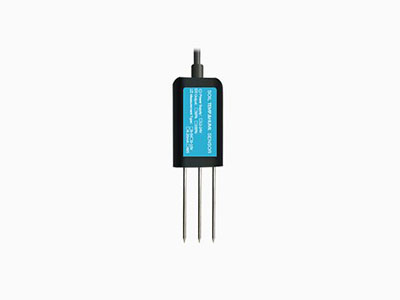In the heart of agricultural landscapes across the globe, a quiet yet profound transformation is unfolding. This transformation is not fueled by the traditional hoes and plows that have sustained farmers for centuries but by innovative weather stations that are revolutionizing farming practices. These advanced systems, leveraging cutting-edge technology, are transforming the way farmers monitor, predict, and respond to weather conditions, ultimately enhancing crop yields, resource efficiency, and sustainability.

The Evolution of Weather Monitoring
Historically, farmers have relied on intuition, oral traditions, and rudimentary tools like barometers and thermometers to forecast weather patterns. While these methods served their purpose for generations, they were inherently limited in accuracy and reliability. The advent of modern weather stations represents a paradigm shift, offering real-time, high-resolution data that farmers can harness to make informed decisions.
The evolution of weather monitoring technology can be traced back to the mid-20th century with the development of automated weather observing systems. Initially, these systems were employed by meteorological agencies for broad-scale weather forecasting. However, as technology advanced, they became more affordable and accessible, paving the way for their integration into precision agriculture.
Today’s weather stations are equipped with an array of sensors capable of measuring parameters such as temperature, humidity, wind speed and direction, solar radiation, precipitation, and soil moisture. These sensors are connected to data loggers that record and transmit the collected information to cloud-based platforms, where it is processed and analyzed using sophisticated algorithms. The result is a wealth of actionable insights that farmers can access via smartphones, tablets, or computers, enabling them to make data-driven decisions.
Precision Agriculture: Tailoring Practices to Conditions
Precision agriculture, a subset of modern farming practices, leverages innovative weather stations to tailor farming activities to specific environmental conditions. By providing real-time weather data, these stations empower farmers to optimize planting dates, irrigation schedules, and fertilizer applications, thereby maximizing crop yields while minimizing resource use.
For instance, knowledge of precise soil moisture levels allows farmers to implement variable-rate irrigation systems. These systems deliver the exact amount of water required by different sections of a field, reducing water waste and enhancing plant health. Similarly, by monitoring temperature and humidity, farmers can predict periods of heightened disease risk and apply pesticides or fungicides preemptively, minimizing crop losses.
Moreover, weather stations equipped with solar radiation sensors enable farmers to optimize the use of photosynthetically active radiation (PAR), a critical factor influencing plant growth. By understanding how much light different crops need, farmers can design shading structures or adjust planting densities to maximize photosynthesis and, consequently, crop productivity.
Enhancing Crop Yields and Resource Efficiency
The impact of innovative weather stations on crop yields and resource efficiency is profound. By providing farmers with timely and accurate weather information, these systems facilitate proactive management of critical farm operations, such as tillage, planting, and harvesting. This proactive approach reduces the likelihood of crop damage due to adverse weather events, such as frost, drought, or excessive rainfall, thereby boosting overall yields.
In addition to yield improvements, weather stations contribute significantly to resource conservation. By enabling precise control over irrigation and fertilizer application, farmers can significantly cut down on water and nutrient usage. This not only reduces operational costs but also mitigates environmental pollution associated with runoff and leaching.
The integration of weather station data with advanced machine learning algorithms further enhances resource management. These algorithms can analyze historical weather patterns and predict future trends, enabling farmers to anticipate and plan for potential challenges. For example, by forecasting drought conditions several months in advance, farmers can adopt drought-tolerant crop varieties or establish water-saving irrigation systems, thereby safeguarding their crops against impending water scarcity.
Promoting Sustainable Farming Practices
Sustainability is a cornerstone of contemporary agriculture, and innovative weather stations are instrumental in promoting sustainable farming practices. By providing farmers with detailed insights into their farm’s microclimate, these systems facilitate the adoption of practices that minimize environmental impact while maintaining or enhancing productivity.
For example, weather data can guide farmers in implementing conservation tillage practices, which involve minimizing soil disturbance to preserve soil structure and organic matter. By reducing tillage, farmers can enhance soil health, improve water infiltration, and reduce greenhouse gas emissions associated with soil compaction and decomposition.
Furthermore, weather stations can help farmers adopt crop rotation and cover cropping strategies that enhance biodiversity and improve soil fertility. By analyzing weather patterns, farmers can select crop combinations that optimize nutrient cycling, suppress pests and diseases, and maintain soil cover throughout the year, thereby fostering a resilient and sustainable agricultural ecosystem.
Addressing Climate Change Challenges
As the global climate continues to change, farmers are facing unprecedented challenges, including increased frequency and severity of extreme weather events. Innovative weather stations are playing a pivotal role in helping farmers adapt to these changes by providing the necessary data and tools to develop resilient farming strategies.
By monitoring long-term weather trends, farmers can identify emerging patterns and adjust their farming practices accordingly. For instance, regions experiencing progressively warmer temperatures and changing precipitation patterns may need to shift towards heat-tolerant and drought-resistant crop varieties. Weather stations, through continuous data collection and analysis, enable farmers to make such informed adjustments, ensuring the long-term viability of their operations.
Conclusion
In conclusion, innovative weather stations are revolutionizing farming practices by providing farmers with real-time, high-resolution weather data that enables precision agriculture. These systems facilitate optimized planting, irrigation, and fertilizer application schedules, enhancing crop yields and resource efficiency while promoting sustainable farming practices. As the global climate evolves, weather stations will continue to be indispensable tools, helping farmers adapt to new challenges and ensure the resilience and productivity of agricultural systems. The integration of advanced technology into agriculture is not just a luxury but a necessity, and innovative weather stations stand at the forefront of this transformative journey.